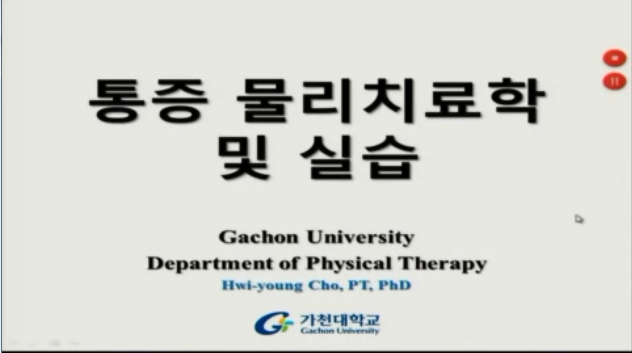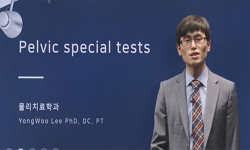Transient receptor potential ankyrin subtype 1(TRPA1) is a well-known ion channel that play a central rolefor pain sensation. In the peripheral sensory nerve terminalsinnervating the body tegument or organs,TRPA1detects and isactivated by diverse harm...
http://chineseinput.net/에서 pinyin(병음)방식으로 중국어를 변환할 수 있습니다.
변환된 중국어를 복사하여 사용하시면 됩니다.
- 中文 을 입력하시려면 zhongwen을 입력하시고 space를누르시면됩니다.
- 北京 을 입력하시려면 beijing을 입력하시고 space를 누르시면 됩니다.



Emerging roles of TRPA1 in sensation of oxidative stress and its implications in defense and danger
한글로보기https://www.riss.kr/link?id=A103919811
- 저자
- 발행기관
- 학술지명
- 권호사항
-
발행연도
2013
-
작성언어
English
- 주제어
-
등재정보
KCI등재,SCIE,SCOPUS
-
자료형태
학술저널
- 발행기관 URL
-
수록면
783-791(9쪽)
-
KCI 피인용횟수
12
- 제공처
-
0
상세조회 -
0
다운로드
부가정보
다국어 초록 (Multilingual Abstract)
Transient receptor potential ankyrin subtype 1(TRPA1) is a well-known ion channel that play a central rolefor pain sensation. In the peripheral sensory nerve terminalsinnervating the body tegument or organs,TRPA1detects and isactivated by diverse harmful environmental and internalstimuli. TheTRPA1activation results in neuronal firing,whichfinally sends a warning signal to our brain. However, sensitizationor sustained activation of TRPA1 often causes plasticchanges both in the neural pathway and in the peripheral tissues,leading to a pathologic state in tissue health and painmediation. Recently, a unique covalent detection mode forreactive biological attacks was uncovered in the sensorymechanisms of TRPA1. Notably, the pool of the newly foundreactive stimulators forTRPA1includes oxidative stress. Here,we overview the nature of this interaction, and try to findbiological meanings of the participation of such a rapid ionotrophiccomponent in disease exacerbations. Acutely, its relativelyrapid response can be understood in terms of efficiencyfor avoiding harmful milieu as quickly as possible, as implicatedin the raison d’etre of the painmechanism. Nonetheless,complex situations in a chronic disease progressmay occur. Aswell, multiple interplays with known molecules on the redoxdefense mechanism are anticipated. At a therapeutic angle,how to control TRPA1 for promoting body’s defensivepotential will be a practical question but remains to beanswered. Future investigations will likely give more detailedinsights to understand the roles and target validity of TRPA1.
참고문헌 (Reference)
1 Nassini, R., "Transient receptor potential ankyrin 1 channel localized to non-neuronal airway cells promotes non-neurogenic inflammation" 7 : 42454-, 2012
2 Szallasi, A., "The vanilloid receptor TRPV1: 10 years from channel cloning to antagonist proof-of-concept" 6 : 357-372, 2007
3 Macpherson, L. J., "The pungency of garlic: activation of TRPA1 and TRPV1 in response to allicin" 15 : 929-934, 2005
4 Geppetti, P., "The concept of neurogenic inflammation" 101 (101): 2-6, 2008
5 Montell, C., "The TRP superfamily of cation channels" 2005
6 McLeod, R. L., "TRPV1 antagonists attenuate antigenprovoked cough in ovalbumin sensitized guinea pigs" 2 : 10-, 2006
7 Takahashi, N., "TRPA1 underlies a sensing mechanism for O2" 7 : 701-711, 2011
8 Bautista, D. M., "TRPA1 mediates the inflammatory actions of environmental irritants and proalgesic agents" 124 : 1269-1282, 2006
9 Bessac, B. F., "TRPA1 is a major oxidant sensor in murine airway sensory neurons" 118 : 1899-1910, 2008
10 Kwan, K. Y., "TRPA1 contributes to cold, mechanical, and chemical nociception but is not essential for hair-cell transduction" 50 : 277-289, 2006
1 Nassini, R., "Transient receptor potential ankyrin 1 channel localized to non-neuronal airway cells promotes non-neurogenic inflammation" 7 : 42454-, 2012
2 Szallasi, A., "The vanilloid receptor TRPV1: 10 years from channel cloning to antagonist proof-of-concept" 6 : 357-372, 2007
3 Macpherson, L. J., "The pungency of garlic: activation of TRPA1 and TRPV1 in response to allicin" 15 : 929-934, 2005
4 Geppetti, P., "The concept of neurogenic inflammation" 101 (101): 2-6, 2008
5 Montell, C., "The TRP superfamily of cation channels" 2005
6 McLeod, R. L., "TRPV1 antagonists attenuate antigenprovoked cough in ovalbumin sensitized guinea pigs" 2 : 10-, 2006
7 Takahashi, N., "TRPA1 underlies a sensing mechanism for O2" 7 : 701-711, 2011
8 Bautista, D. M., "TRPA1 mediates the inflammatory actions of environmental irritants and proalgesic agents" 124 : 1269-1282, 2006
9 Bessac, B. F., "TRPA1 is a major oxidant sensor in murine airway sensory neurons" 118 : 1899-1910, 2008
10 Kwan, K. Y., "TRPA1 contributes to cold, mechanical, and chemical nociception but is not essential for hair-cell transduction" 50 : 277-289, 2006
11 Birrell, M. A., "TRPA1 agonists evoke coughing in guinea pig and human volunteers" 180 : 1042-1047, 2009
12 Bevan, S., "TRP channel antagonists for pain–opportunities beyond TRPV1" 10 : 655-663, 2009
13 Hinman, A., "TRP channel activation by reversible covalent modification" 103 : 19564-19568, 2006
14 Helyes, Z., "Role of transient receptor potential vanilloid 1 receptors in endotoxin-induced airway inflammation in the mouse. American journal of physiology" 292 : 1173-1181, 2007
15 Lee, L. Y., "Role of TRPV1 in inflammation-induced airway hypersensitivity" 9 : 243-249, 2009
16 Taylor-Clark, T. E., "Relative contributions of TRPA1 and TRPV1 channels in the activation of vagal bronchopulmonary C-fibres by the endogenous autacoid 4-oxononenal" 586 : 3447-3459, 2008
17 Keum, Y.S., "Regulation of the Keap1/Nrf2 system by chemopreventive sulforaphane: implications of posttranslational modifications" 1229 : 184-189, 2011
18 Dakhama, A., "Regulation of airway hyperresponsiveness by calcitonin gene-related peptide in allergen sensitized and challenged mice" 165 : 1137-1144, 2002
19 Brozmanova, M., "Preferential activation of the vagal nodose nociceptive subtype by TRPA1 agonists in the guinea pig esophagus" 23 : 437-445, 2011
20 Bhattacharya, A., "Pharmacology and antitussive efficacy of 4-(3-trifluoromethyl-pyridin-2-yl)-piperazine-1-carboxylic acid (5-trifluoromethyl-pyridin-2-yl)-amide (JNJ17203212), a transient receptor potential vanilloid 1 antagonist in guinea pigs" 323 : 665-674, 2007
21 Reichling, D. B., "Pain and death: neurodegenerative disease mechanisms in the nociceptor" 69 : 13-21, 2011
22 Taylor-Clark, T. E., "Ozone activates airway nerves via the selective stimulation of TRPA1 ion channels" 588 : 423-433, 2010
23 Neubauer, J. A., "Oxygen-sensing neurons in the central nervous system" 96 : 367-374, 2004
24 Schofield, C. J., "Oxygen sensing by HIF hydroxylases" 5 : 343-354, 2004
25 Patel, V. P., "Nuclear transport, oxidative stress, and neurodegeneration" 4 : 215-229, 2011
26 Macpherson, L.J., "Noxious compounds activate TRPA1 ion channels through covalent modification of cysteines" 445 : 541-545, 2007
27 Bandell, M., "Noxious cold ion channel TRPA1 is activated by pungent compounds and bradykinin" 41 : 849-857, 2004
28 Taylor-Clark, T. E., "Nitrooleic acid, an endogenous product of nitrative stress, activates nociceptive sensory nerves via the direct activation of TRPA1" 75 : 820-829, 2009
29 Yoshida, T., "Nitric oxide activates TRP channels by cysteine S-nitrosylation" 2 : 596-607, 2006
30 Hiroi, T., "Neutrophil TRPM2 channels are implicated in the exacerbation of myocardial ischaemia/reperfusion injury" 2012
31 Jordt, S. E., "Mustard oils and cannabinoids excite sensory nerve fibres through the TRP channel ANKTM1" 427 : 260-265, 2004
32 Kang, K. W., "Molecular mechanism of nrf2 activation by oxidative stress" 7 : 1664-1673, 2005
33 Kajiya, K., "Molecular bases of odor discrimination : reconstitution of olfactory receptors that recognize overlapping sets of odorants" 21 : 6018-6025, 2001
34 Holzer, P, "Local effector functions of capsaicin-sensitive sensory nerve endings : involvement of tachykinins, calcitonin gene-related peptide and other neuropeptides" 24 : 739-768, 1988
35 Symanowicz, P. T., "Lack of role for the vanilloid receptor in response to several inspired irritant air pollutants in the C57Bl/6J mouse" 362 : 150-153, 2004
36 Hara, Y., "LTRPC2 Ca2?-permeable channel activated by changes in redox status confers susceptibility to cell death" 9 : 163-173, 2002
37 Nunomura, A., "Involvement of oxidative stress in Alzheimer disease" 65 : 631-641, 2006
38 Leung, S. Y., "Inhibition of citric acid- and capsaicininduced cough by novel TRPV-1 antagonist, V112220, in guinea-pig" 3 : 10-, 2007
39 Sadofsky, L. R., "Inflammatory stimuli up-regulate transient receptor potential vanilloid-1 expression in human bronchial fibroblasts" 38 : 78-81, 2012
40 Maher, J. M., "Induction of the multidrug resistance-associated protein family of transporters by chemical activators of receptormediated pathways in mouse liver" 33 : 956-962, 2005
41 Caterina, M. J., "Impaired nociception and pain sensation in mice lacking the capsaicin receptor" 288 : 306-313, 2000
42 Perl, E. R., "Ideas about pain, a historical view" 8 : 71-80, 2007
43 Hatano, N., "Hypoxia-inducible factor-1alpha (HIF1alpha) switches on transient receptor potential ankyrin repeat 1 (TRPA1) gene expression via a hypoxia response element-like motif to modulate cytokine release" 287 : 31962-31972, 2012
44 Lu, H., "Hypoxia-inducible factor 1 activation by aerobic glycolysis implicates the Warburg effect in carcinogenesis" 277 : 23111-23115, 2002
45 Webb, J. D., "Hypoxia, hypoxiainducible factors (HIF), HIF hydroxylases and oxygen sensing" 66 : 3539-3554, 2009
46 Reddy, N. M., "Genetic dissection of the Nrf2-dependent redox signaling-regulated transcriptional programs of cell proliferation and cytoprotection" 32 : 74-81, 2007
47 Olausson, H., "Functional role of unmyelinated tactile afferents in human hairy skin: sympathetic response and perceptual localization" 184 : 135-140, 2008
48 Mukhopadhyay, I., "Expression of functional TRPA1 receptor on human lung fibroblast and epithelial cells" 31 : 350-358, 2011
49 Cordero-Morales, J. F., "Cytoplasmic ankyrin repeats of transient receptor potential A1 (TRPA1) dictate sensitivity to thermal and chemical stimuli" 108 : 1184-1191, 2011
50 Andre, E., "Cigarette smoke-induced neurogenic inflammation is mediated by alpha, beta-unsaturated aldehydes and the TRPA1 receptor in rodents" 118 : 2574-2582, 2008
51 Imlay, J. A, "Cellular defenses against superoxide and hydrogen peroxide" 77 : 755-776, 2008
52 Hayes, J. D., "Cancer chemoprevention mechanisms mediated through the Keap1-Nrf2 pathway" 13 : 1713-1748, 2010
53 Kindt, K. S., "Caenorhabditis elegans TRPA-1 functions in mechanosensation" 10 : 568-577, 2007
54 Jia, Y., "Anandamide induces cough in conscious guineapigs through VR1 receptors" 137 : 831-836, 2002
55 Macpherson, L. J., "An ion channel essential for sensing chemical damage" 27 : 11412-11415, 2007
56 Zhang, G., "Altered expression of TRPV1 and sensitivity to capsaicin in pulmonary myelinated afferents following chronic airway inflammation in the rat" 586 : 5771-5786, 2008
57 Weissmann, N., "Activation of TRPC6 channels is essential for lung ischaemia-reperfusion induced oedema in mice" 3 : 649-, 2012
58 Nassini, R., "Acetaminophen, via its reactive metabolite N-acetyl-p-benzo-quinoneimine and transient receptor potential ankyrin-1 stimulation, causes neurogenic inflammation in the airways and other tissues in rodents" 24 : 4904-4916, 2010
59 Story, G. M., "ANKTM1, a TRP-like channel expressed in nociceptive neurons, is activated by cold temperatures" 112 : 819-829, 2003
60 Flood-Page, P., "A study to evaluate safety and efficacy of mepolizumab in patients with moderate persistent asthma" 176 : 1062-1071, 2007
61 Caceres, A. I., "A sensory neuronal ion channel essential for airway inflammation and hyperreactivity in asthma" 106 : 9099-9104, 2009
62 Raemdonck, K., "A role for sensory nerves in the late asthmatic response" 67 : 19-25, 2012
63 Peterlin, Z., "A painful trp can be a bonding experience" 53 : 635-638, 2007
64 Aarts, M., "A key role for TRPM7 channels in anoxic neuronal death" 115 : 863-877, 2003
65 Trevisani, M., "4-Hydroxynonenal, an endogenous aldehyde, causes pain and neurogenic inflammation through activation of the irritant receptor TRPA1" 104 : 13519-13524, 2007
동일학술지(권/호) 다른 논문
-
- 대한약학회
- 이애영
- 2013
- KCI등재,SCIE,SCOPUS
-
- 대한약학회
- 박수현
- 2013
- KCI등재,SCIE,SCOPUS
-
- 대한약학회
- Tran Thi Thu Thuy
- 2013
- KCI등재,SCIE,SCOPUS
-
- 대한약학회
- Seongjoon Park
- 2013
- KCI등재,SCIE,SCOPUS
분석정보
인용정보 인용지수 설명보기
학술지 이력
| 연월일 | 이력구분 | 이력상세 | 등재구분 |
|---|---|---|---|
| 2023 | 평가예정 | 해외DB학술지평가 신청대상 (해외등재 학술지 평가) | |
| 2020-01-01 | 평가 | 등재학술지 유지 (해외등재 학술지 평가) |  |
| 2010-01-01 | 평가 | 등재학술지 유지 (등재유지) |  |
| 2008-01-01 | 평가 | 등재학술지 유지 (등재유지) |  |
| 2006-01-01 | 평가 | 등재학술지 유지 (등재유지) |  |
| 2004-01-01 | 평가 | 등재학술지 유지 (등재유지) |  |
| 2001-01-01 | 평가 | 등재학술지 선정 (등재후보2차) |  |
| 1998-07-01 | 평가 | 등재후보학술지 선정 (신규평가) |  |
학술지 인용정보
| 기준연도 | WOS-KCI 통합IF(2년) | KCIF(2년) | KCIF(3년) |
|---|---|---|---|
| 2016 | 1.96 | 0.2 | 1.44 |
| KCIF(4년) | KCIF(5년) | 중심성지수(3년) | 즉시성지수 |
| 1.07 | 0.87 | 0.439 | 0.05 |




 ScienceON
ScienceON






